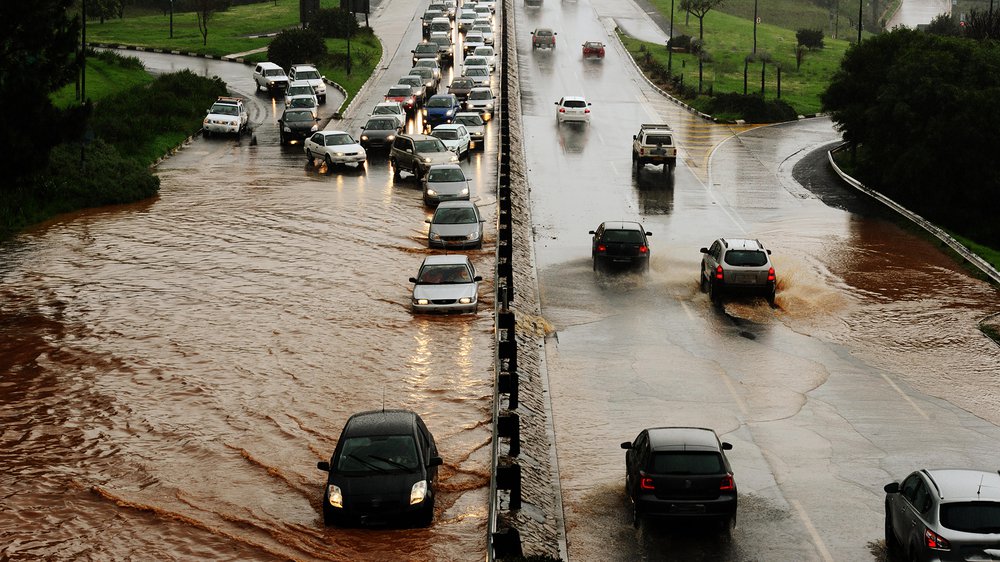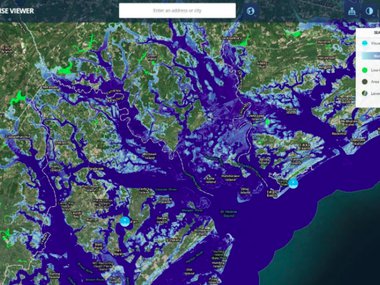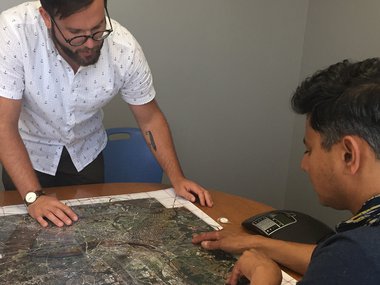Question Your World: What Are the Changes Involved with Climate Change?
Unless you’ve been living under a rock for the past few decades, you’ve been hearing a lot about climate change. This global topic has been studied and flagged as a major concern by nearly the entire globe’s scientific community. In case you were wondering what has been changing due to climate change, we’ve got you covered.
The global ocean has absorbed 90% of the energy accumulated by the climate system due to human-caused climate change since the 1970′s (IPCC, 2013). This absorption of heat has resulted in about 1°F of warming of the ocean’s surface relative to the 20th century average.
Intense storms are becoming more common
Heavy rainfall events across the US have become more severe and more common, and the amount of rain falling on the heaviest rainy days has also increased. Recently, NOAA scientists linked human-caused climate change to the massive rainfall in Louisiana.

Image credit: Getty Images
The ocean is becoming more acidic
The pH level of the ocean has decreased by about 0.1 units since the beginning of the industrial era (IPCC, 2013), reflecting an almost 30% increase in acidity related to the uptake of carbon dioxide at the ocean surface. Ocean acidification has already had a huge impact on the shellfish industry across the US.
Sea levels are rising faster than they have in at least the last 27 centuries
The rate of global sea-level rise during the 20th century (~1.4 mm/year) was almost certainly faster than any century for the last 2,700 years. Global sea level is expected to rise by almost three feet by the end of the century or earlier (IPCC, 2013), and, depending on when humans begin to mitigate heat-trapping gas emissions, will continue to rise for at least the next 10,000 years.
Droughts and heat waves are more intense and common
Studies have confirmed that human-caused climate changes have increased the likelihood of intense heat waves and droughts across the US and Europe. These extreme events have large impacts on public health and agricultural economies.
2/3 of species of plants and animals are starting their springtime cycles earlier
Phenology is the study of the timing of life events in plants and animals –basically, it’s nature’s calendar. Shifting phenology is a clear indicator of climate change. Shifts in phenology have been detected across various species of both plants and animals.
Springtime snow cover across the northern hemisphere is shrinking.
Over the last five decades, satellite imagery has shown us that snow cover has been disappearing earlier in the spring than it did only a few decades ago. This early melting has large impacts on the length of the agricultural growing season and adversely impacts communities that depend on the water resource that snow melt provides.
So what are some things you could be doing to help lessen the impacts?

New eco-friendly cars are readily available all over the states
Saving gasoline while saving the planet has never been easier, with nearly 30 hybrid and electric options for the 2016 model year. The US seeks to double the average fuel economy of new cars and trucks by 2025, helping to “accelerate” this transition.
You can buy local and seasonal foods to reduce the transporting of items from across the globe
The typical American lives only about 60 miles from an apple orchard, but buys apples from the grocery store that have traveled nearly 1700 miles to get there. “Virginia’s Finest” and “Virginia Grown” labels help you identify locally-grown Virginia foods.
Weather-proof your home and don’t go nuts on your thermostat
You can save almost 10% per year on your energy bills by using a programmable thermostat in your home.
Bike and walk more, especially on your days off!
Increasing our usage of alternative urban passenger transportation like bicycling could save society nearly $24 trillion dollars between 2015 and 2050. Also, it would reduce heat-trapping gas emissions due to passenger transportation by nearly 11% by 2050. Oh, and it’s really fun and healthy to ride bikes. Bonus!
Encourage your local governments to install renewable energy infrastructure like solar panels on city rooftops.
San Francisco legislators have begun to require solar infrastructure on any new buildings over ten stories tall. This is part of San Francisco’s broader goal to have 100% of their electricity provided by renewable sources by 2030. You can see how much you’d save on energy bills over 20 years using Google’s Project Sunroof.
These are just a few of the changes that are happening and the actions that people all around the world are taking to lessen the impact of climate change. The big question now is, how many of these things are you doing?


